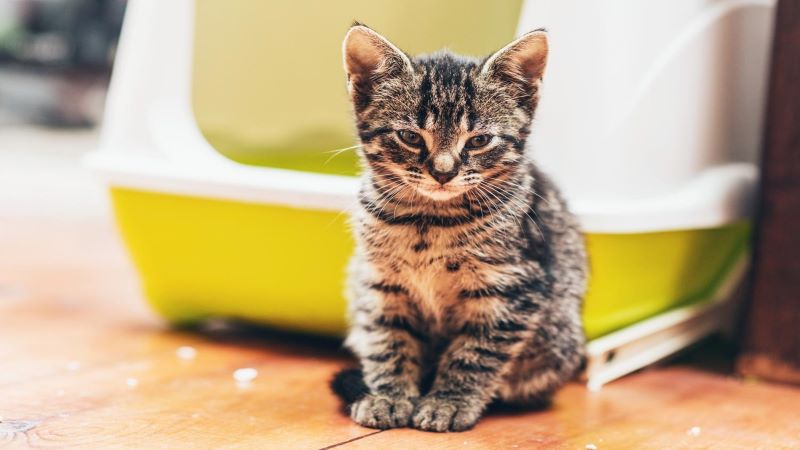Do you know how often you should clean your cat’s litter box? Did you know that cleaning his box can keep him healthier, help avoid allergy issues, and ensure he uses the bathroom in the appropriate spot? Read on to see our tips for spring cleaning your litter box to set your cat up for success!
Daily cleaning
If you’ve owned a cat for any length of time, you know you should scoop your cat’s litter box, using a litter scoop, once a day. It is also a good idea to add fresh litter to replace what you removed while cleaning, and to sprinkle some baking soda in before you turn the freshened litter, to absorb odor.
Time for a deep clean...
Staying on top of the scooping, but still notice an odor? Has your cat has become finicky about using the litter box? Once a week, push up your sleeves and do a deep clean. Don’t know where to start? Here’s the scoop…
- Dump the entire box into the trash can.
- Squirt a small amount of unscented liquid dish soap in the box and fill with hot water. Soak for 30 minutes to an hour. Add a drop or two of vinegar to eliminate smells.
- If you have a lowered immune system, it is best to wear gloves and a mask. Pregnant women should pass along the job of this deep clean to another family member. Although rare, toxoplasmosis, a disease that can be passed to people through cat feces and then through the placenta to an unborn child, is extremely dangerous to pregnant women.
- Use a brush designated only for the litter box to scrub the inside of the box.
- Dry the box thoroughly with a paper towel.
- Wash your hands.
You can also watch this PetMD video for step by step instructions on how to clean your cat’s litter box.
Still dealing with a stinky litter box?
If you’re still noticing a smell, or your cat is not using his litter box appropriately, try these tips:
- The ratio of cat to litter box must be 1:1, with one additional box if possible. In other words, if you have two cats, you should have three boxes, one for each cat, and one extra. The same goes for the levels of your home. If you live in a two story house, you should have three litter boxes, one for each level, and an additional one.
- Veterinarian Marty Becker recommends an odor-eliminating clumping clay, like Fresh Step Odor Shield Litter. In the feature The Vets Will See You Now in the March 2017 issue of Real Simple Magazine, Becker warns that a cat refusing to use the litter box could be a cleanliness issue, and changing the type of litter or your litter scooping habits could fix the problem.
- The type of litter box you choose and litter box placement are important factors to take into consideration. Pam Johnson-Bennett, owner of Cat Behavior Associates, cautions against using covered litter boxes. According to Johnson-Bennett, “While a covered box is more aesthetically pleasing to people and may appear to give the cat privacy, it actually presents a situation in which the cat may feel trapped and unable to escape from a predator.” Make sure your litter box is easy for your cat to access, but away from where he eats. For more tips on litter box training and for a video about choosing and setting up your cat’s litter box, see PetMD’s post, Litter Box Training: Why Setup and Placement Matters.
Your cat depends on you!
About cats, French critic and historian Hippolyte Taine once said, His tongue is, by turns, a sponge, a comb, a brush. He cleans himself, he smooths himself, he knows what is proper. But cats must rely on us for litter box cleaning. So, go deep clean that litter box. A clean cat is a happy cat!

